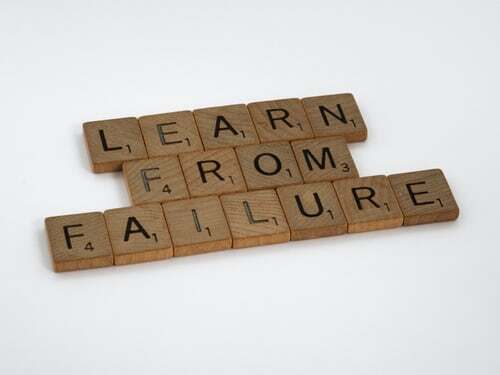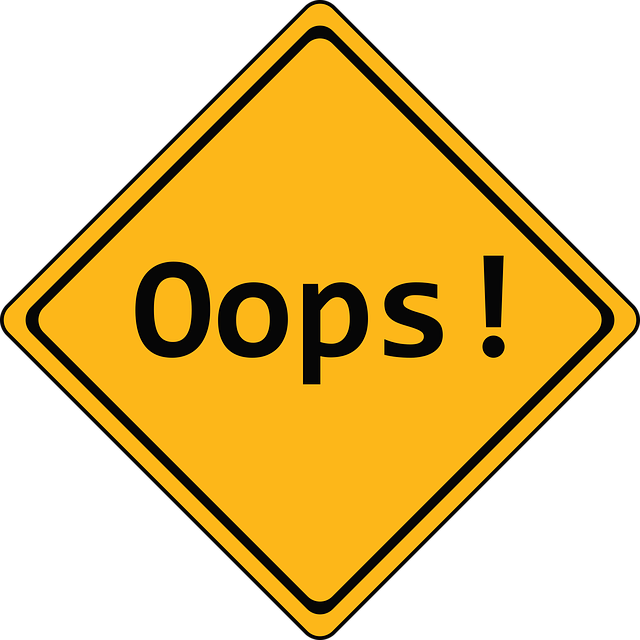
Mistakes Happen: How to Handle Slip-ups in Presentations
To err is human; everyone makes mistakes. But if you handle mistakes and slip-ups in presentations with confidence, your presentation will end smoothly and successfully.
Admitting that mistakes happen and have to be dealt with is the first step in creating a recovery plan. By practicing how to handle mishaps in advance, you’ll be well equipped to deal with an emergency.
Ask yourself what mistakes and slip-ups could occur and prepare yourself
Preparing for a presentation is not just about going through the slides and checking equipment. Considering any potential mistakes that could arise is key to delivering the best presentation possible. Ask yourself how you can proactively address your mistakes with a positive attitude and what mishaps might occur in presentations.
Go through the individual points of your presentation and think about how you can answer questions from your audience. Even elements that you may not consider very important can lead to problems and mishaps.
Consider the little things
Thinking beyond the presentation itself will help you avoid any unnecessary mistakes. Be on time. Being late is the first serious mistake you should avoid. First impressions are everything and being late to your own presentation will make you look unprofessional. Plan in advance how long it will take you to get to the venue and factor in other issues, such as whether there are enough parking spaces or if public transport is running on time that day.
Also, think back on any mishaps that may have happened to you in past presentations. As we all know, you learn from your mistakes – so use them to improve yourself!

You need to radiate confidence, particularly during presentations that are extremely important to you or your company. The right preparation will allow you to remain calm during your presentation and show your audience that you have everything under control – even if you slip up.
Avoid or solve technical errors

The days of straightforward presentations are over. Nowadays, virtually all presentations involve PowerPoint or other media which require the right equipment. This technology is one of the most frequent causes of mishaps (e.g., projector or microphone failure) in presentations. Presenters need to stay on top of it all to ensure a smooth presentation.
Take the time to check on-site equipment before you give your presentation. If, despite all your preparation, you run into technical problems and don’t know what to do, ask the audience if someone tech-savvy can help or if someone is familiar with the problem.
Sometimes, no matter what you do or who helps you out, the equipment just doesn’t want to cooperate. In that case, be prepared to deliver your presentation without PowerPoint so you can continue confidently.
Use back-ups
Back-ups can be lifesavers for presentations. It may be worth packing a second charger or even a second laptop. Having a paper version of your PowerPoint on hand is also a great idea.
When does it make sense to repair equipment?
If an important piece of equipment fails during your presentation, the first thought is often to fix it. If the issue is minor – think broken laser pointer – it makes more sense to just continue with the presentation.
If your tablet or laptop battery is dead, announce a short break and connect your device to the power supply.
For more complex technical problems, notify the building management or a technician.
The classic: How to handle a mental blackout with confidence

Although it happens to everyone, it can still be really embarrassing. Losing your train of thought in a presentation is something every dreads.
When it happens, it can often help to take a breath and pause before you continue. Smile openly at your audience; this will make you appear more confident. Even if this pause seems like an eternity, your audience won’t notice as much, and it will give you a moment to calm your nerves.
Summarizing what you’ve already shared with your audience can also help you recover from a mental blackout. This gives you the opportunity to remind your audience of the most important points and gives you the time you need to get back on track.
And if you still can’t remember where you left off, ask your audience for help. No one will hold it against you if you ask, “Where was I?”.
Disturbance from the audience

When thinking about possible mistakes that can occur during a presentation, many people only have the presenter in mind. The audience, however, can be just as responsible for disturbances as the presenter. Interruptions coming from the audience may include ringing phones, people that arrive late or conversations that are being held during the talk. Sometimes, presenters may even have to face interruptions in form of the audience loudly commenting on the topic
In this paragraph, we’re going to explain how to handle such disturbances and how to potentially incorporate them into your presentation. Because even though interruptions might not always be helpful, they come with the chance to interact with your audience.
If some members of the expected audience aren’t present at the time you set your talk to start, it might be worth thinking about delaying the start for 5-10 minutes. If you do decide to delay your presentation it is important to tell the audience that is present, as this gives them the opportunity to prepare for a later start. On top of that, it is advisable to kindly ask your audience to mute their phones as this will prevent disturbances caused by ringing or vibrating phones. But if interruptions occur, there are a few ways to handle them.
If there is a disturbance, the first thing to do is to ask yourself whether it’s just you that is distracted by it or if it distracts your whole audience. Based on this decision you can then react either passively or actively to the disruption.
Passively
Given you decide that you as the presenter are the only person affected by this, the best option is to simply ignore it and to proceed with your talk. Another option to passively react to a disruption is to tolerate it. An example for this would be a person that is late to your presentation. As this is an interruption that everyone in your audience might notice, it’s worth addressing it in a friendly way without seeming annoyed or rude.
Actively
Besides the listed ways of passively reacting to an interruption, there are also ways to actively address them. As disturbances, such as the audience saying something, often mean that your listeners are interested in what you’re saying, it’s a good idea to integrate their interruptions into your presentation.
If you are comfortable with alternating your presentation plan as you present, it’s worth answering any questions regarding the topic of your talk, there and then. Alternatively, you always have the option to do a Q&A at the end of your presentation.
In rare cases, you might face situations during a presentation, in which people shout things that aren’t constructive or relevant for your presentation. If those people refuse to be quiet after you have kindly asked them to, ask them to leave so your presentation won’t be disturbed further.
Use composure and humor to communicate strength and confidence

A mistake isn’t a problem until the presenter makes it one. For example, no matter how big the goof up, a smile always communicates a sense of composure and shows that you’re not so easily thrown off your game.
Although a mistake or technical snafu during your presentation may seem like the end of the world, handling it with humor will keep things light and upbeat. There’s not much you can do if the microphone breaks down or if it’s too loud outside the meeting room. Sure, it may disrupt your presentation but if you treat the situation with humor, you’ll diffuse any tension or discomfort you and your audience may be feeling.
Mistakes in presentations happen. Handle them with confidence and score points with your audience!

No matter how professional and experienced you are, mistakes and mishaps happen to everyone. Follow our tips and tricks and keep calm during your presentation. Your audience will keep following your presentation and focusing on your content, regardless of any mishaps.
Whatever may come, try to remember the following tips for mistakes in presentations: Don’t lose your sense of humor; it will always trumps irritation and impatience. So, even if something goes wrong, avoid harsh or snide remarks. Instead, stay friendly and positive. After all, every problem can be solved somehow!
If you have any questions about preparing a PowerPoint presentation, feel free to contact us at [email protected]




